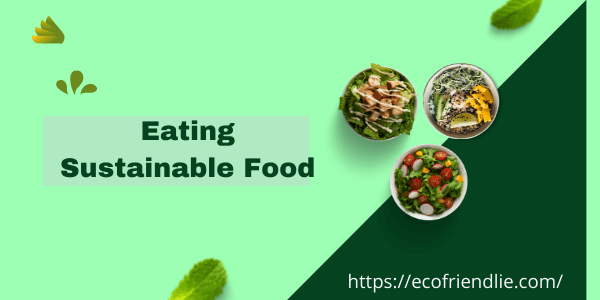Meal Planning-7 Foods Promote Sustainable Eating
Meal planning isn’t just for having nutritious meals on hand. As a result, sustainmable eating tips focus on reducing food waste.
As a dietitian, I use meal planning as one of several tools to help my clients stay on track with their health and nutrition goals. It’s a simple system, but getting started can be difficult. I understand!
What is Meal Planning?
Meal planning is a method (of which there are many) of preparing meals in advance for the coming week. Years ago, I created the Master Meal Planning program, which was one of the first dietitian-approved and dietitian-created programs, and we’ve helped thousands of people make cooking and sustainable eating simple.
I’d like to share some of the lessons from our program and how you can apply them to your life during the busy holiday season to gain the skills and knowledge you’ll need to meal plan successfully for the rest of your life!
7 Foods That Promote Sustainable Eating

1- Plant Based Food Groups can Promote Sustainable Eating
The food we eat on a daily basis has altered the planet. Natural resources have been depleted to make room for cattle grazing and crop production to feed livestock. As a result of overfishing, our oceans are becoming barren. Food production has a significant impact on climate change. According to reports, meat and dairy farming accounts for about a quarter of global greenhouse gas emissions, water consumption, and other natural resource consumption.
We clearly need to rebalance our diets by prioritising plant-based meals and reducing our consumption of animal products. Chef David Edward Raj, a culinary innovator, offers a few options for eating habits that are healthy, tasty, and long-lasting.
2- Sprouts
The nutritional value of the plant is doubled, and in some cases tripled, during the sprouting process. Sprouts are delicious as a side dish with a light dressing or as a crunchy addition to soups, salads, and sandwiches.
3- Root Vegetables
Root vegetables are eaten because they are high in carbohydrates. They are the crisp and colorful underground parts of plants. They have a wide range of vitamins and minerals in them. In comparison to other vegetables, they survive for a long time after harvest. Replace the carrots and parsnips with turnips if you want to reduce your carb intake even more.
4- Nuts and Seeds
Nuts and seeds are thought to be little powerhouses in the diet. Their protein, vitamin E, and healthy fat content, combined with a delicious flavor and texture, are unrivaled. Salads, soups, and desserts all benefit from their crunchiness.
5- Mushrooms
According to research, there are over 2,000 edible mushroom varieties. For centuries, they’ve been grown for their flavor and nutritional value. They’re high in B and D vitamins, as well as protein and fiber. Mushrooms can also grow in places where other foods cannot. They’re a tasty addition and a good meat substitute because of their texture and umami flavor.
6- Leafy Greens
They are the most adaptable and nutrient-dense of all vegetables. They’re grown as part of other vegetables, like beets and pumpkins, as well as individual leaves. They are high in dietary fiber, many vitamins and minerals, low in calories, and have been linked to a variety of health benefits. Leafy greens are typically fast-growing and are used in a wide range of dishes around the world, whether cooked or raw. Some leafy vegetables, such as Moringa, are marketed as superfoods.
7- Fruits Like Vegetable
Vegetable-like fruits are vegetables that are naturally sweeter and, in most cases, have a higher carbohydrate and water content. Squash, tomatoes, eggplants/aubergines, peppers, and zucchini are some examples. Fruits and vegetables, which are commonly grown in warm climates, can be eaten in a variety of ways and are high in vitamin C and fiber.
8- Cereals, Pulses and Legumes
Cooking for Your Health
You know all those amazing food blogs, the dozen Pinterest boards you’ve made, the recipes you’ve bookmarked, and the stacks of cookbooks in your kitchen? So, how many of those recipes have you tried yourself? Do you also try to cook a different recipe every day of the week?
This is something I’m also guilty of. I have a lot of Pinterest boards and recipes bookmarked, but I never seem to make them.
I’m guessing you don’t make those recipes every week, and even if you did, that would be a lot of cooking! Cooking new recipes every day, all the time, takes a lot of time, energy, and money. That was my first encounter with meal planning, and I quickly discovered that it didn’t work for me, my schedule, or my budget.
It wasn’t just me who struggled with meal planning frameworks like this; I’ve seen clients and friends struggle with it as well. What I discovered was that they had a hard time sticking to it, that it felt like an all-or-nothing process, that they felt like they did it “wrong” or that they were under pressure to do it perfectly every time, and that it didn’t produce the desired result — feeling great and supporting their long-term health habits!
It’s easier said than done, I know. It can be overwhelming, especially in the world of food and nutrition blogs — most of the stunning recipes you see online or on social media are created by people who don’t have an education or knowledge in nutrition, health, or science to make those recipes with your long-term health in mind, and are developed by people who don’t have an education or knowledge in nutrition, health, or science to make those recipes for you.
They do appear to be stunning. They have the potential to inspire you, which is fantastic! But I’ve had a lot of clients who have tried recipes and discovered that they are either high in sugar, lack whole foods, or don’t turn out the way they were supposed to, leaving them frustrated.
The majority of those recipes aren’t intended to be long-term healthy. Since 2013, as a dietitian, I’ve curated and purposefully developed all of my recipes to help you cultivate a healthier relationship with food while also nourishing your body! All of our recipes include nutrient-dense ingredients prepared in ways that allow the body to absorb and utilise the nutrients more effectively.
We occasionally add fancy ingredients to spice things up, but at its core, it’s just plain whole food.
Reducing Food Waste
This time of year, a startling statistic from the Environmental Protection Agency (EPA) about the amount of waste generated during the holidays is frequently shared.
The original 2006 report, though now out of date, warns that between Thanksgiving and New Year’s Day, the US increases by 25% to 1 million tonnes. Since the holidays can easily be a time of excess food preparation, paper, and packaging materials for all of us, it’s great to see an increase in awareness over the last decade!
It’s also not just during the holidays. It’s something we can all work on throughout the year. Meal planning is a simple strategy that can help us actively and consciously reduce food waste.
Reduced food waste could mean buying less food each week because you have a pantry stocked with bulk items, making your weekly food purchases more efficient. Because you have a plan to follow and portions planned ahead of time (i.e. meal planning! ), you will consume it all before the end of the week.
What Are Rotations?
Now for the food waste-reducing meal planning tip! A rotation is a week’s worth of 3-5 recipes that you use for breakfast, lunch, and dinner for one week before switching it out the next week and repeating.
This concept can not only help you focus on just a few key recipes per week, but it can also make sustainable eating simple and ensure that you’re nourishing your body with nutrient-dense recipes, especially if they’re NS recipes, which are all designed with your health in mind!
For example, if you have a breakfast recipe for oatmeal porridge that you eat every day for a week, you’ll have peace of mind knowing that breakfast is already taken care of and figured out! The same goes for your lunch and dinner.
If you think you’ll get bored eating this way, believe me when I tell you that you won’t! There are so many small tweaks you’ll learn in our next class that will add variety to every meal in the simplest of ways. Not to mention the fact that you’ll be changing up the recipes again in a few days!
Rotational cooking not only relieves the stress of deciding what to cook, but it also saves you money because you only buy what you need for those recipes.
Rotations also encourage you to vary your diet from week to week, increasing the amount of nutrient density and variety you consume over the course of a month!
Bottom Line
A rotation is a week’s worth of 3-5 recipes you use for one week, for breakfast, lunch, and dinner then switch it out the following week and repeat!



